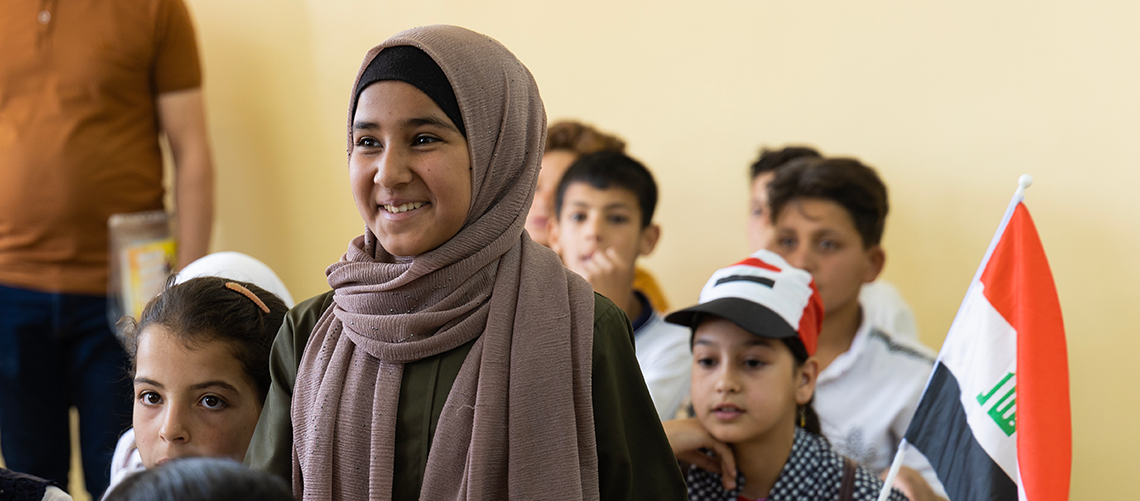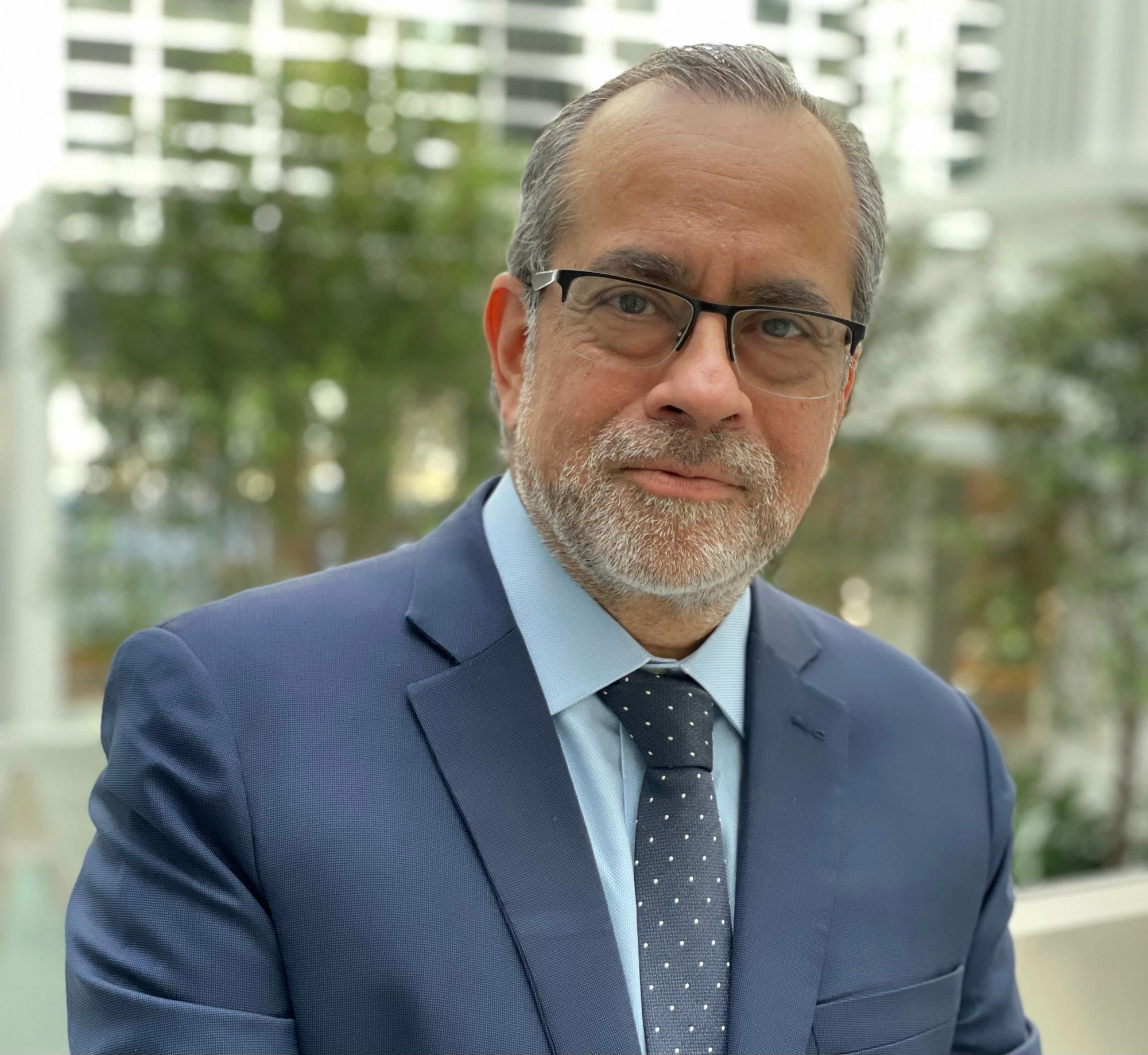 A student stands amongst her classmates in a classroom in Iraq.
A student stands amongst her classmates in a classroom in Iraq.
On May 15 this year, we were in Baghdad on what was a very special day for 350 primary education children. We had traveled north of the city with the World Bank education team for the opening ceremony of the Abu Hayyan school, located in one of the country’s poorest districts. The school had been destroyed by ISIS and was just rebuilt with support from the World Bank.
The newly reconstructed school offers a learning space for students who previously had to travel two hours to attend a triple-shift school. Many children just never attended class as they simply did not have the means to pay for the 4-hour daily commute to school. Many who did had a poor learning experience of only three hours of instruction each day. Some dropped out of school entirely.
There is a huge need for school construction in Iraq
The Abu Hayyan school is one of 26 schools recently reconstructed by the Ministry of Education with World Bank’s support. But this is only the start. Many more schools are needed across Iraq to ensure the two million Iraqi children out of school today have a chance to learn. And these schools are needed quickly.
Today, more than 8,000 schools need to be constructed in Iraq. Many of them were destroyed by ISIS and years of conflict and fragility. While an overwhelming number of schools is needed in Iraq, it is crucial to acknowledge that each new school makes a huge difference in some children’s lives. Schools can promote community cohesion and social progress. Iraq has been allocating only around 1% of its capital expenditures to education infrastructure, which is low by any standard. The country will have to spend more and better on education infrastructure urgently.
Investing in school construction and learning is key to better human development outcomes in Iraq
However, school reconstruction is only part of the solution. Many children go to school but don’t learn. This is true in Iraq and other countries around the world. Investments in school infrastructure must be accompanied by substantive learning investments: in teacher training, materials, technology, and other quality inputs. As we know, the responsibility of teachers is to make sure that every single student learns. But teachers need to have the means and support to do that.
Talking with the teachers and the principal of the Abu Hayyan school, their message was clear: they need more teaching material and, more importantly, more training. Globally, overwhelming evidence shows that continuous teacher training and coaching, coupled with lesson plans and workbooks for children, can lead to tremendous results: teachers’ knowledge and confidence increase, and student learning improves.
The newly launched national education strategy for Iraq paves the way for improved learning
There is hope that more Iraqi schools will receive what they need. On the same day of our visit to Abu Hayyan school, Prime Minister Mohammed Shiaa Al-Sudani gathered the whole Cabinet, many government officials, academia, the World Bank, UNICEF and UNESCO, as well as education stakeholders and the press, to launch the Iraq National Education Strategy 2022-2031 and reiterate the government’s strong commitment to improving education Iraq.
This national strategy recognizes that investing in educating children and youth is the most important development challenge for Iraq. We highlighted to the Cabinet that for economies to be competitive and for young people to have all the skills needed to build their own future, there is only one path — to invest in people. Countries like Iraq must invest in education infrastructure, teachers and technology — they must invest in education to improve human capital.
The education strategy sets the vision and path towards a better education system and learning for all Iraqi children over the next 10 years. Importantly, the strategy rightfully emphasizes that equitable access and learning for all Iraqi children can only be achieved by ensuring provision of enough learning spaces and quality inputs to education.
The Iraqi education strategy sets ambitious goals to achieve this vision, such as achievement of universal primary and lower secondary completion by 2031 — which is currently only at 80% and 60%, respectively — and expansion of enrollment in higher-secondary education to around 70% from currently 45%, as well as increased provision of informal education services.
It also proposes ambitious goals to enhance education quality: reduce class sizes, ensure continuous in-service training of teachers, boost the size of the teaching force to accommodate for increased enrollment and equip every school and student with the necessary resources and materials. Expanding market relevance, quality of instruction and research of tertiary institutions is also a fundamental component of the strategy.
A promising first step — and now it is time to implement!
The launch of this strategy is a promising first step, but strategies must be implemented. Implementation will require a firm financial and political commitment, and the support from the international community.
More and better investments in the education sector are needed now. The strategy calls for an increase in the share of education expenditures of the total public budget from only 10% in recent years to 16% in the next 10 years to achieve its goals. That is an essential step, although still below what is needed to solve the large human capital needs of the country.
Increased financial commitment, together with the political commitment to invest efficiently in education infrastructure, invest in the teaching career, and ensure putting the interests of the Iraqi students before any other national priority, will put Iraq on a path of sustainable development and improved welfare for all its citizens.







Join the Conversation